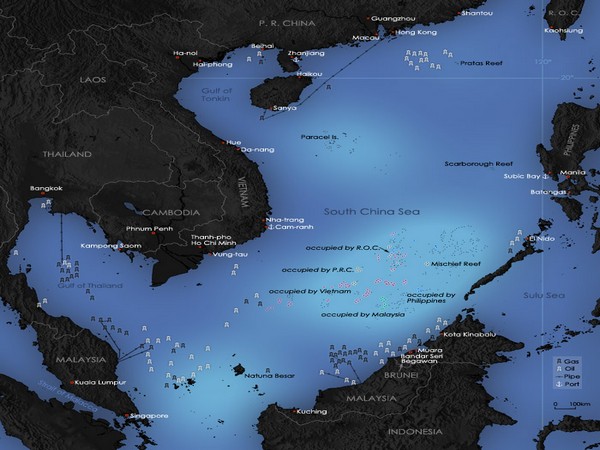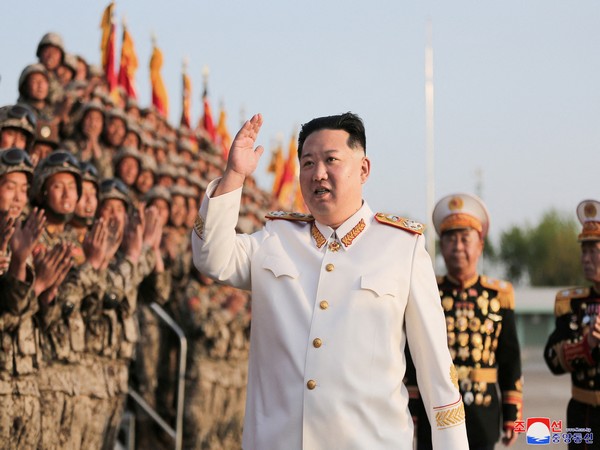
Washington D.C. [USA], July 8 (ANI): A Chinese Coast Guard ship has once again shown up at Vanguard Bank in the South China Sea, a known flashpoint between Vietnam and China, as per data cited by vessel-tracking software.
The arrival of coastguard ship ‘5402’ within 30 nautical miles of a Vietnamese oil rig in the region on Monday comes less than a week after China sent a survey vessel into the South China Sea waters, according to Radio Free Asia, a US-based nonprofit international broadcasting corporation. It is patrolling near block 06.01, a Vietnamese oil exploration block licensed to Russian oil company Rosneft. Vietnam‘s planned exploration in that block prompted the standoff last year.
The ship’s presence this week risks a repeat of a prolonged standoff between the two Asian powers that played out in this disputed, southern section of the South China Sea in the second half of last year.
The Chinese Coast Guard ship left the port of Sanya, located in China‘s Hainan province on July 1. It stopped at Subi Reef, one of China‘s largest artificial islands in the Spratly Islands on July 2. It subsequently sailed north of Vanguard Bank, within 200 nautical miles of Vietnam‘s coast on July 4, and is currently patrolling right on top of the bank, which is a completely submerged feature.
The Vanguard Bank is disputed between Vietnam and China and lies off Vietnam‘s southern coast. In July 2019, a CCG contingent accompanied a Chinese survey vessel operating within Vietnam‘s waters around the submerged feature, causing diplomatic outcry and a tense, months-long standoff between the Vietnamese and Chinese coastguards.
China, however, claims it has “historic rights” to this special exclusive economic zone and most other areas in the South China Sea, roughly demarcated by its so-called “nine-dash line” – a position unsupported under international law.
Vietnam‘s government is yet to comment publicly on the presence of 5402. Last week it criticised a Chinese military exercise further north near the Paracel Islands, which also has disputes with China, and stated survey vessels from other countries needed to seek permission before operating in Vietnamese waters – a reaction to the Hai Yang Di Zhi 4 incident.
Beijing has always maintained that any energy exploration in the South China Sea must be done with Chinese partners and not any other international companies. China has brought this position into the so-called Code of Conduct (CoC) negotiations between it and the Association of Southeast Asian Nations (ASEAN), which Vietnam currently chairs.
The CoC is meant to govern behaviour in the South China Sea between its claimants and both China and ASEAN members agreed to resume negotiations on July 2. However, provocative behaviour from China has thrown the viability of those negotiations into doubt.
China‘s sweeping territorial claims overlap with those of ASEAN members Brunei, Malaysia, the Philippines and Vietnam.
“They’re using provocations, pressure, strong-arm tactics, but then at the same time the Chinese are also offering carrots and appearing reasonable in publicly seeking a negotiated solution,” said Andrew Scobell, a senior political scientist for the US-based RAND Corporation and a professor at Marine Corps University, referring to the CoC.
“It’s all part of a comprehensive approach to advancing China‘s interests in the South China Sea,” he added.
The new CCG deployment at Vanguard Bank is one of the many provocative actions that China has been undertaking with its neighbourhood at a time when everyone expected that it would renounce confrontation and focus on the country’s economy.
The recent clash between Indian and Chinese border troops in the Galwan Valley in eastern Ladakh, along the Line of Actual Control (LAC) and a series of violent protest in Hong Kong against China‘s new security law further add to Beijing’s attempt at holding an iron fist in the region. (ANI)



















